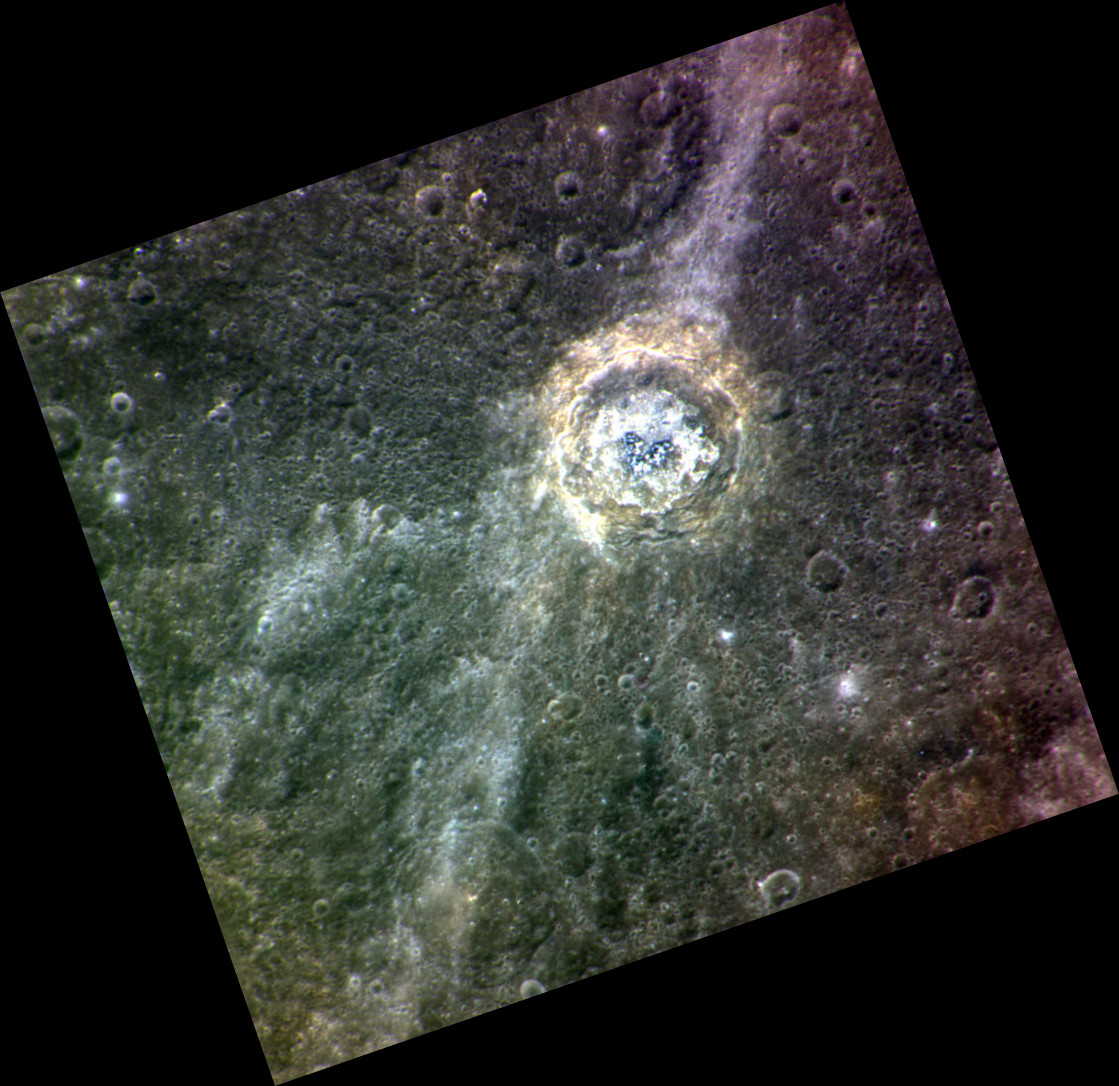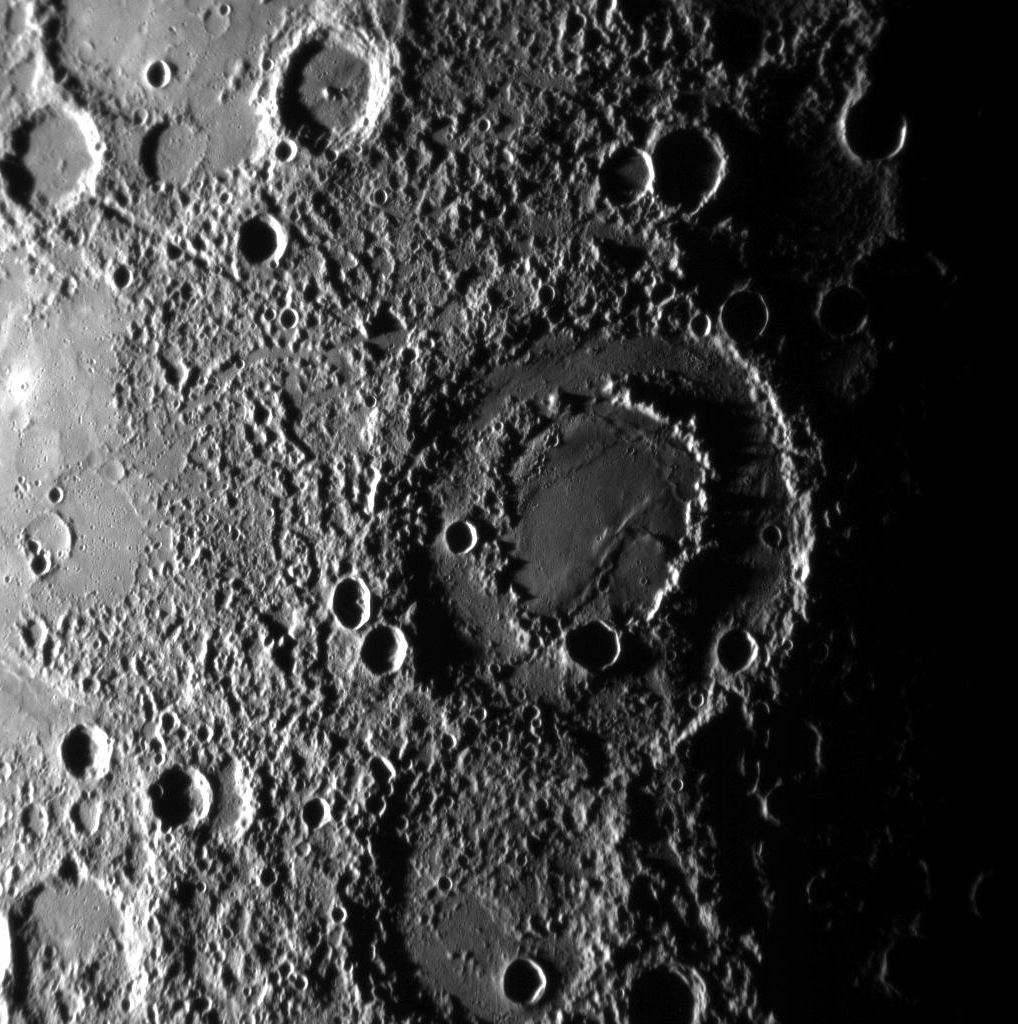|
De Graft (crater)
De Graft is a crater on Mercury. Its name was adopted by the International Astronomical Union in 2009, after Ghanaian playwright, poet, and novelist Joe de Graft. Much of the floor of de Graft is covered in hollows. De Graft is one of the largest craters of the Kuiperian system on Mercury. The largest is BartÃģk crater.Denevi, B. W., Ernst, C. M., Prockter, L. M., and Robinson, M. S., 2018. The Geologic History of Mercury. In ''Mercury: The View After MESSENGER ''MESSENGER'' was a NASA robotic space probe that orbited the planet Mercury between 2011 and 2015, studying Mercury's chemical composition, geology, and magnetic field. The name is a backronym for "Mercury Surface, Space Environment, Geoche ...'' edited by Sean C. Solomon, Larry R. Nittler, and Brian J. Anderson. Cambridge Planetary Science. Chapter 6, Table 6.4. References Impact craters on Mercury {{Mercury-planet-stub ... [...More Info...] [...Related Items...] OR: [Wikipedia] [Google] [Baidu] |
MESSENGER
''MESSENGER'' was a NASA robotic space probe that orbited the planet Mercury between 2011 and 2015, studying Mercury's chemical composition, geology, and magnetic field. The name is a backronym for "Mercury Surface, Space Environment, Geochemistry, and Ranging", and a reference to the messenger god Mercury from Roman mythology. ''MESSENGER'' was launched aboard a Delta II rocket in August 2004. Its path involved a complex series of flybys â the spacecraft flew by Earth once, Venus twice, and Mercury itself three times, allowing it to decelerate relative to Mercury using minimal fuel. During its first flyby of Mercury in January 2008, ''MESSENGER'' became the second mission, after Mariner 10 in 1975, to reach Mercury. ''MESSENGER'' entered orbit around Mercury on March 18, 2011, becoming the first spacecraft to do so. It successfully completed its primary mission in 2012. Following two mission extensions, the spacecraft used the last of its maneuvering propellant to deo ... [...More Info...] [...Related Items...] OR: [Wikipedia] [Google] [Baidu] |
Joe De Graft
Joseph Coleman de Graft (2 April 1924 â 1 November 1978) was a prominent Ghanaian writer, playwright and dramatist, who was appointed the first director of the Ghana Drama Studio in 1962. He produced and directed plays for radio, stage and television, as well as acting, and was also a poet and educator. Biography De Graft was born in Cape Coast, in the Gold Coast (present-day Ghana). His surname derives from a Dutch grandfather. He received his secondary schooling there at Mfantsipim. In 1953, at the age of 29, and after an education interrupted by four years teaching at his old school, de Graft graduated from the University College of the Gold Coast, one of the first undergraduates to take English Honours. That year, he married Leone Buckle, an accountant from Osu, Accra, and they subsequently had three children, Carol, Cobbie, and Kweku. In 1955 de Graft returned to Mfantsipim School, where he taught English and was in charge of the Mfantsipim Drama Laboratory. A major infl ... [...More Info...] [...Related Items...] OR: [Wikipedia] [Google] [Baidu] |
Mercury (planet)
Mercury is the smallest planet in the Solar System and the closest to the Sun. Its orbit around the Sun takes 87.97 Earth days, the shortest of all the Sun's planets. It is named after the Roman god ' ( Mercury), god of commerce, messenger of the gods, and mediator between gods and mortals, corresponding to the Greek god Hermes (). Like Venus, Mercury orbits the Sun within Earth's orbit as an inferior planet, and its apparent distance from the Sun as viewed from Earth never exceeds 28°. This proximity to the Sun means the planet can only be seen near the western horizon after sunset or the eastern horizon before sunrise, usually in twilight. At this time, it may appear as a bright star-like object, but is more difficult to observe than Venus. From Earth, the planet telescopically displays the complete range of phases, similar to Venus and the Moon, which recurs over its synodic period of approximately 116 days. The synodic proximity of Mercury to Earth makes Mercury most ... [...More Info...] [...Related Items...] OR: [Wikipedia] [Google] [Baidu] |
International Astronomical Union
The International Astronomical Union (IAU; french: link=yes, Union astronomique internationale, UAI) is a nongovernmental organisation with the objective of advancing astronomy in all aspects, including promoting astronomical research, outreach, education, and development through global cooperation. It was founded in 1919 and is based in Paris, France. The IAU is composed of individual members, who include both professional astronomers and junior scientists, and national members, such as professional associations, national societies, or academic institutions. Individual members are organised into divisions, committees, and working groups centered on particular subdisciplines, subjects, or initiatives. As of 2018, the Union had over 13,700 individual members, spanning 90 countries, and 82 national members. Among the key activities of the IAU is serving as a forum for scientific conferences. It sponsors nine annual symposia and holds a triannual General Assembly that sets policy ... [...More Info...] [...Related Items...] OR: [Wikipedia] [Google] [Baidu] |
Ghana
Ghana (; tw, Gaana, ee, Gana), officially the Republic of Ghana, is a country in West Africa. It abuts the Gulf of Guinea and the Atlantic Ocean to the south, sharing borders with Ivory Coast in the west, Burkina Faso in the north, and Togo in the east.Jackson, John G. (2001) ''Introduction to African Civilizations'', Citadel Press, p. 201, . Ghana covers an area of , spanning diverse biomes that range from coastal savannas to tropical rainforests. With nearly 31 million inhabitants (according to 2021 census), Ghana is the List of African countries by population, second-most populous country in West Africa, after Nigeria. The capital and List of cities in Ghana, largest city is Accra; other major cities are Kumasi, Tamale, Ghana, Tamale, and Sekondi-Takoradi. The first permanent state in present-day Ghana was the Bono state of the 11th century. Numerous kingdoms and empires emerged over the centuries, of which the most powerful were the Kingdom of Dagbon in the north and ... [...More Info...] [...Related Items...] OR: [Wikipedia] [Google] [Baidu] |
NASA
The National Aeronautics and Space Administration (NASA ) is an independent agency of the US federal government responsible for the civil space program, aeronautics research, and space research. NASA was established in 1958, succeeding the National Advisory Committee for Aeronautics (NACA), to give the U.S. space development effort a distinctly civilian orientation, emphasizing peaceful applications in space science. NASA has since led most American space exploration, including Project Mercury, Project Gemini, the 1968-1972 Apollo Moon landing missions, the Skylab space station, and the Space Shuttle. NASA supports the International Space Station and oversees the development of the Orion spacecraft and the Space Launch System for the crewed lunar Artemis program, Commercial Crew spacecraft, and the planned Lunar Gateway space station. The agency is also responsible for the Launch Services Program, which provides oversight of launch operations and countdown management f ... [...More Info...] [...Related Items...] OR: [Wikipedia] [Google] [Baidu] |
Hollows (Mercury)
Hollows are a landform on the planet Mercury, discovered during the '' MESSENGER'' mission that orbited the planet from 2011 to 2015. Hollows are typically clusters of rimless depressions with flat floors and haloes of bright (high albedo) material surrounding them. Hollows are thought to form by loss of volatiles from the surface by sublimation, caused by the intense solar radiation on the airless planet. They are some of the youngest features on Mercury. Hollows were first observed as bright areas within craters imaged by the Mariner 10 spacecraft in 1974, but the images were not of sufficient resolution to discern any detail. These craters include Balzac, Tyagaraja, Theophanes, Zeami, and Hopper.Dzurisin, D., 1977. Mercurian bright patches: Evidence for physio-chemical alteration of surface material? ''Geophysical Research Letters'', 4, 383-386, doi:10.1029/GL004i010p00383 The MESSENGER spacecraft imaged the rest of the planet, much of it at higher resolution and in co ... [...More Info...] [...Related Items...] OR: [Wikipedia] [Google] [Baidu] |
Geology Of Mercury
The geology of Mercury is the scientific study of the surface, crust, and interior of the planet Mercury. It emphasizes the composition, structure, history, and physical processes that shape the planet. It is analogous to the field of terrestrial geology. In planetary science, the term ''geology'' is used in its broadest sense to mean the study of the solid parts of planets and moons. The term incorporates aspects of geophysics, geochemistry, mineralogy, geodesy, and cartography. Historically, Mercury has been the least understood of all the terrestrial planets in the Solar System. This stems largely from its proximity to the Sun which makes reaching it with spacecraft technically challenging and Earth-based observations difficult. For decades, the principal source of geologic information about Mercury came from the 2,700 images taken by the Mariner 10 spacecraft during three flybys of the planet from 1974 to 1975. These images covered about 45% of the planetâs surface, bu ... [...More Info...] [...Related Items...] OR: [Wikipedia] [Google] [Baidu] |
BartÃģk (crater)
BartÃģk is a crater on Mercury. Its name was adopted by the International Astronomical Union (IAU) in 1979. BartÃģk is named for the Hungarian composer BÃĐla BartÃģk, who lived from 1881 to 1945. BartÃģk is the largest crater of the Kuiperian system on Mercury, at 118 km diameter. It is followed by Amaral crater. Within the central peak complex of BartÃģk is a ''dark spot'' of low reflectance material (LRM).Zhiyong Xiao, Robert G. Strom, David T. Blewett, Paul K. Byrne, Sean C. Solomon, Scott L. Murchie, Ann L. Sprague, Deborah L. Domingue, JÃķrn Helbert, 2013. ''Dark spots on Mercury: A distinctive low-reflectance material and its relation to hollows''. Journal of Geophysical Research Planets.doi.org/10.1002/jgre.20115/ref> Dark spots are associated with hollows. To the northeast of BartÃģk is the large basin Beethoven. The crater VÄlmiki is to the northwest of BartÃģk, and Gogol Nikolai Vasilyevich Gogol; uk, link=no, ÐÐļКÐūĖÐŧа ÐаŅÐļĖÐŧŅÐūÐ ... [...More Info...] [...Related Items...] OR: [Wikipedia] [Google] [Baidu] |

